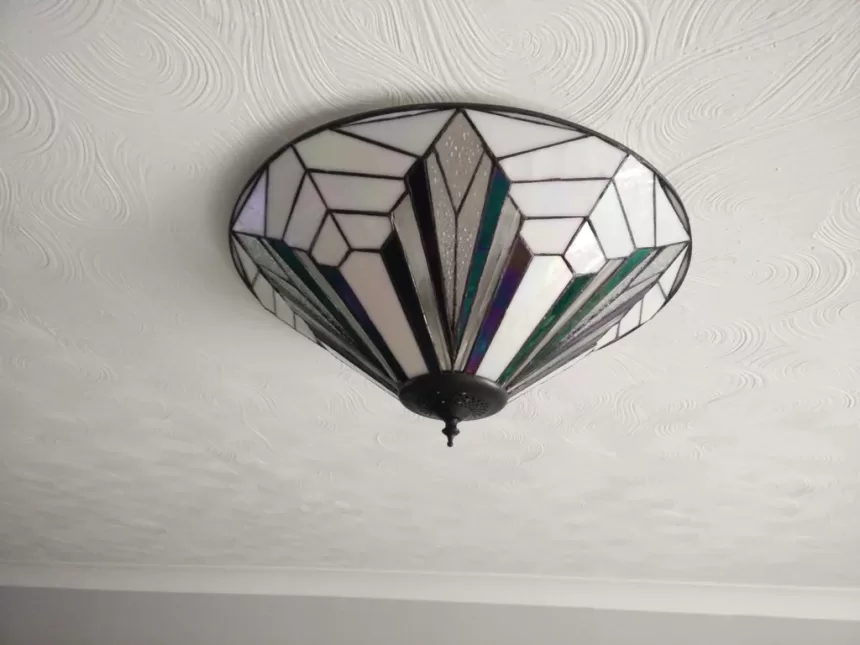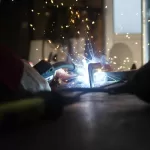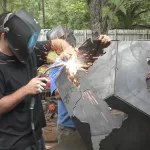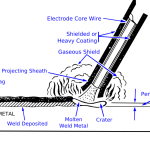Creating a unique homemade log burner fireguard is one welding project idea that sells a lot in the market today. The interesting thing is that it doesn’t require much investment. Choose your measurements for all the tools and materials you’ll need.
Geometric Globe Firepit
Welding Town
By makergeek
MakerGeek youtube
These are often determined by the size of the burner you want to build. Cut the steel into pieces and weld; then grind your welds flat before making the stand, then hinges/connectors before giving it a fine finish with metal paint.
In this instructable I walk through the process for creating a custom metal fire guard to go around a log burner.
I built this as I have young children in my family that were coming to visit over christmas, and I wanted to avoid them accidentally touching the log burner which gets extremely hot in use. The idea was just to provide a simple barrier that would keep the children away whilst still allowing access to the log burner to add fuel.
For this project you require:
Welder – I used a MIG welder. (clarke 150en)
Bench Grinder – to shape the round bar to get good contact at the join points
Angle grinder – unless you are a much better welder than I am, you’ll want to clean things up with an angle grinder
Mild steel flat bar stock – 20mmx3mm
Mild steel round bar – 6mm
Step 1: Watch the Build Video
read on for the steps
Step 2: Make the Frames
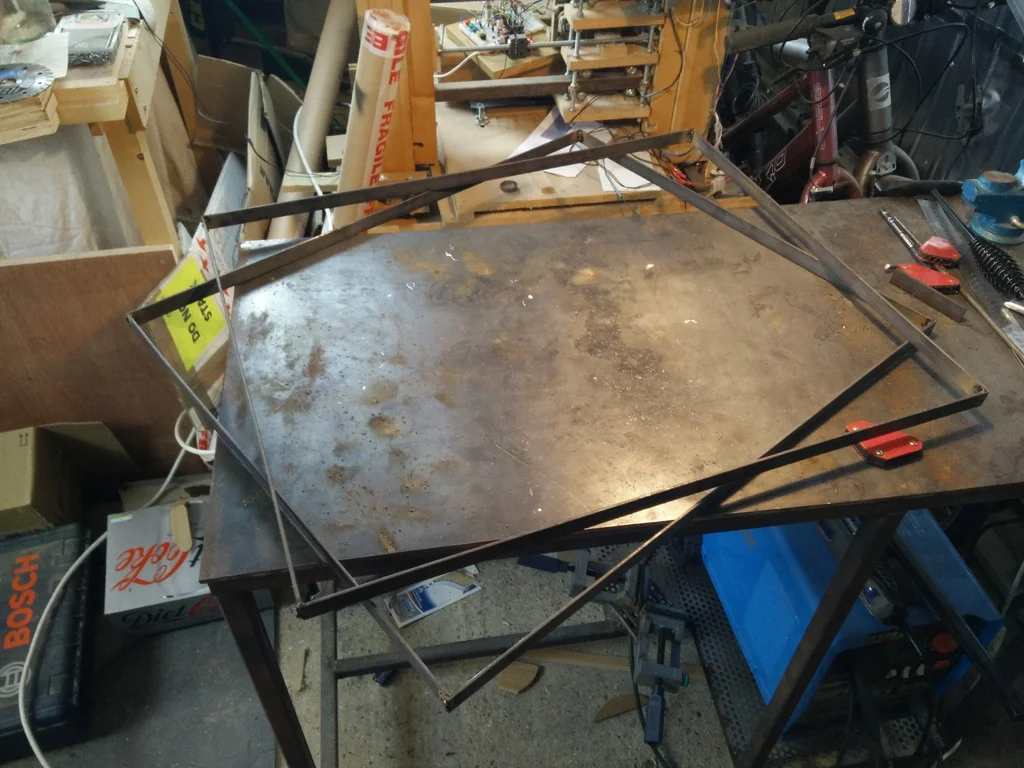
This project requires 3 identical frames, that go around the 3 exposed sides of the log burner. Simply determine the size of your panels (mine was dictated by the size of the granite hearth the burner sits on and the height of the burner itself. I wanted all 3 to be the same size.
Cut the flat bar stock to the relevant lenghts and make some simple 90 degree joins.
It can be helpful to have a 90degree angle clamp for this, though one is not necessary.
Step 3: Determine the Design
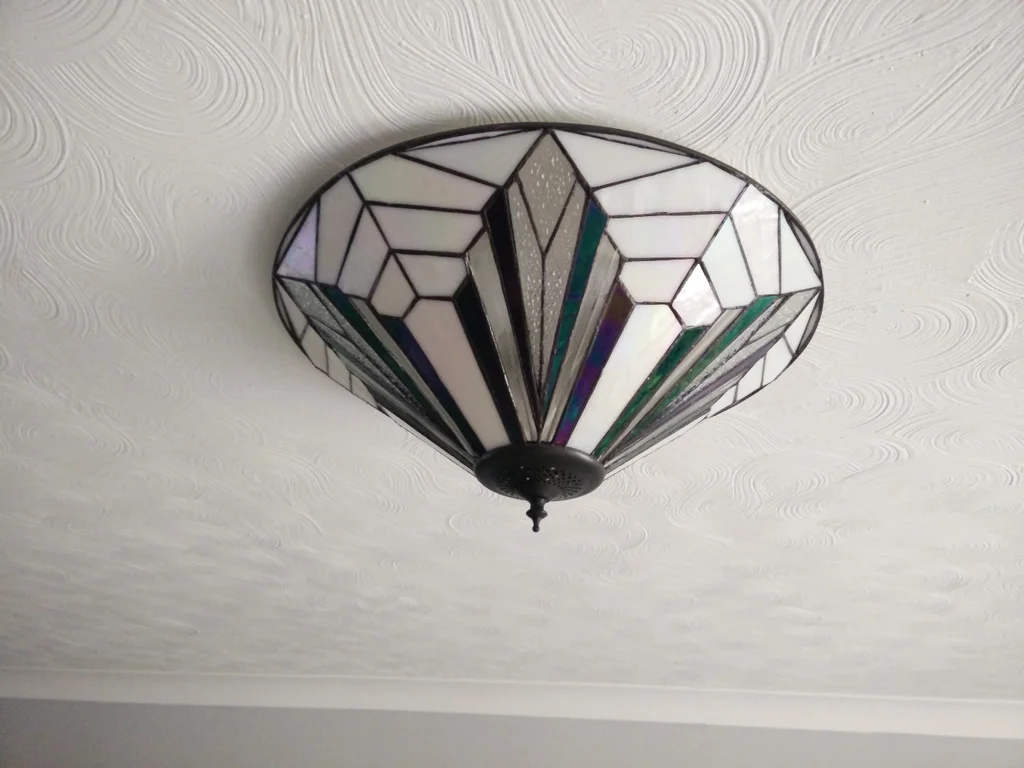
For my guard I went with an art deco design based off the light fittings in our room. The advantage of this design were the straight lines and symetrical pattern. In theory though you could come up with any interesting pattern you like.
Step 4: Make Scale Drawing of Your Design
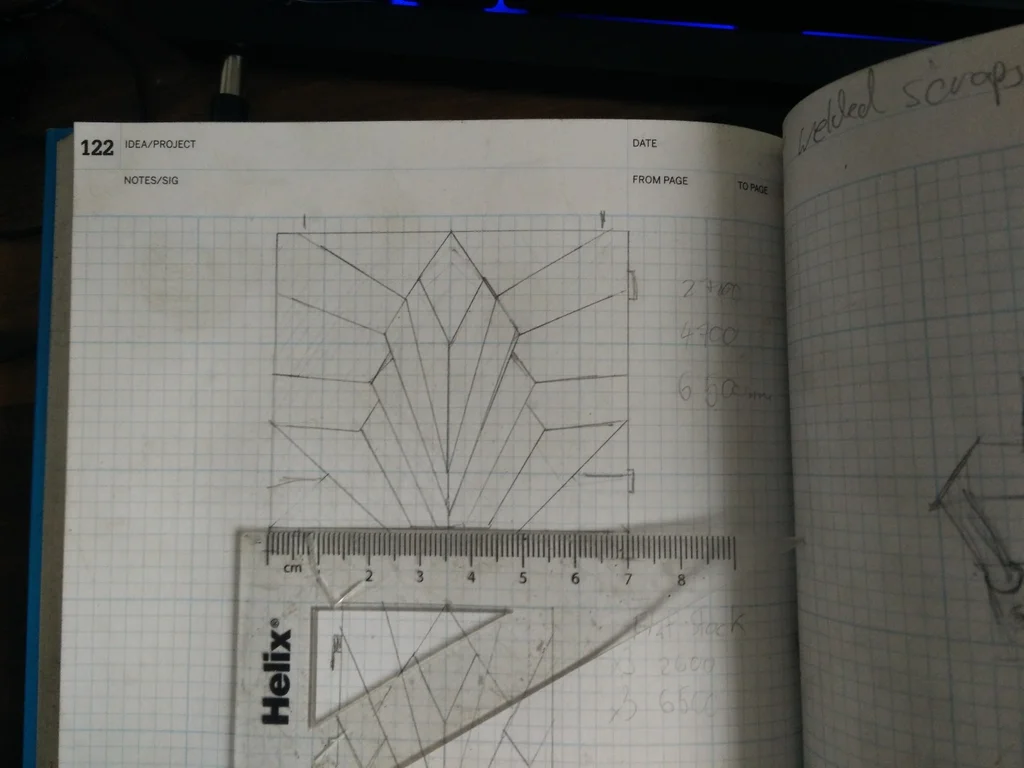
Draw your design in 1:10 scale on graph paper. This means that you can measure in mm and cut in cm.
This means you don’t need to do any clever math or figuring out, just draw the design you want inside a box at the 1:10 scale of your frame size. Then you can measure each line in your drawing, and it if it is 17mm long in the drawing, you need to cut some round bat to be 17cm long in real life. In my design I repeated the same layout 3 times, this was easier than doing something different each time. It also means that every time you setup a tool to cut a length you need, you can cut 3 which saves you time.
Step 5: Cut the First Few Pieces and Start Welding
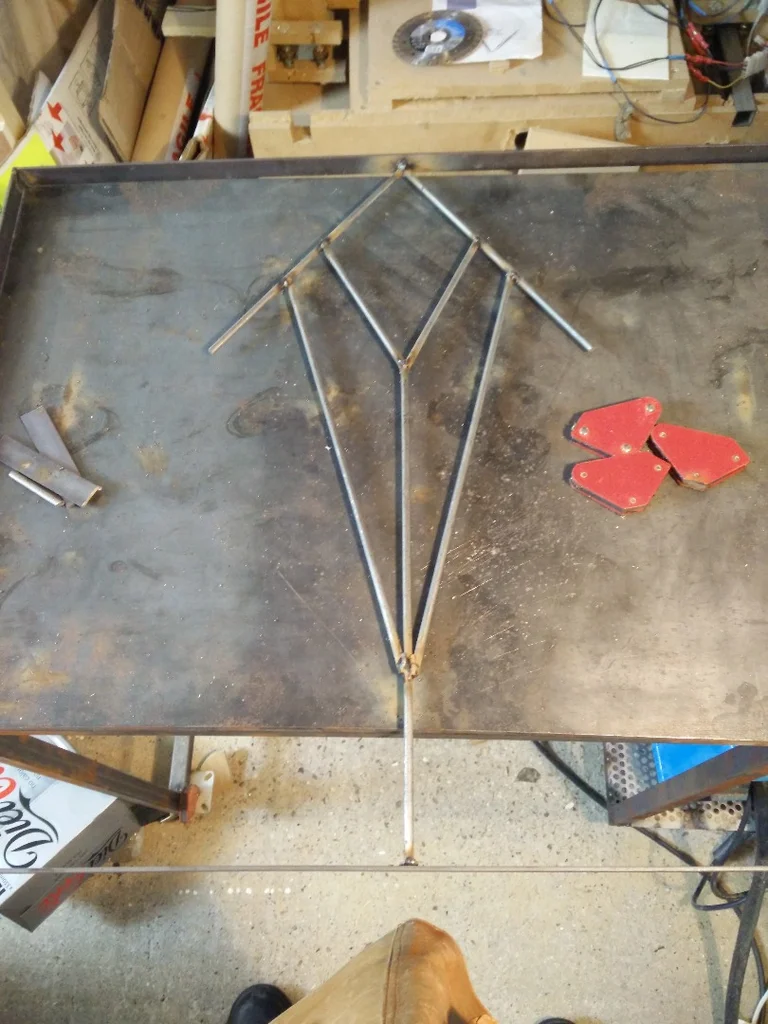
Unless you are perfect, it probably doesn’t make sense to cut all the pieces then start welding. Because little inaccuracies can build up, and welding can cause flex which you may need to account for in adjusting the length of some pieces.
So start with a few parts of the main central pattern. It’s helpful to have some welders magnets to hold things in the arrangement you want whilst you weld the joints.
As you cut each piece of steel rod to go into a place in your design, hold it against what you have so far, and use a marker pen to draw the angle that the pieces will join each other. You can then take the rod to the bench grinder and grind the ends to match the required angle.
This will give a much better join with more contact area for your welding.
Step 6: Grind Your Welds Flat
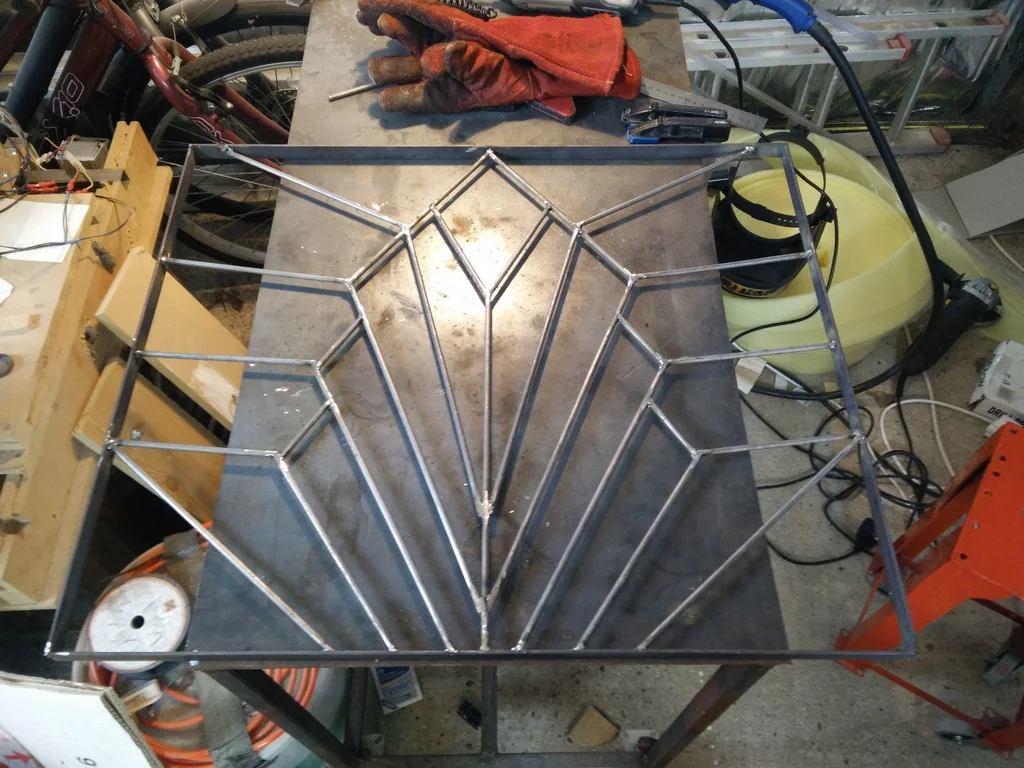
Once you have completed cutting the lenghts and welding your pattern in place, take an angle grinder and clean up all the welds.
This will make the finished item look better (unless you are a great welder) it will also act as a small strength test to your welding, if you have messed up any joins it will probably come apparent at this stage and you can redo them.
Step 7: Make Feet
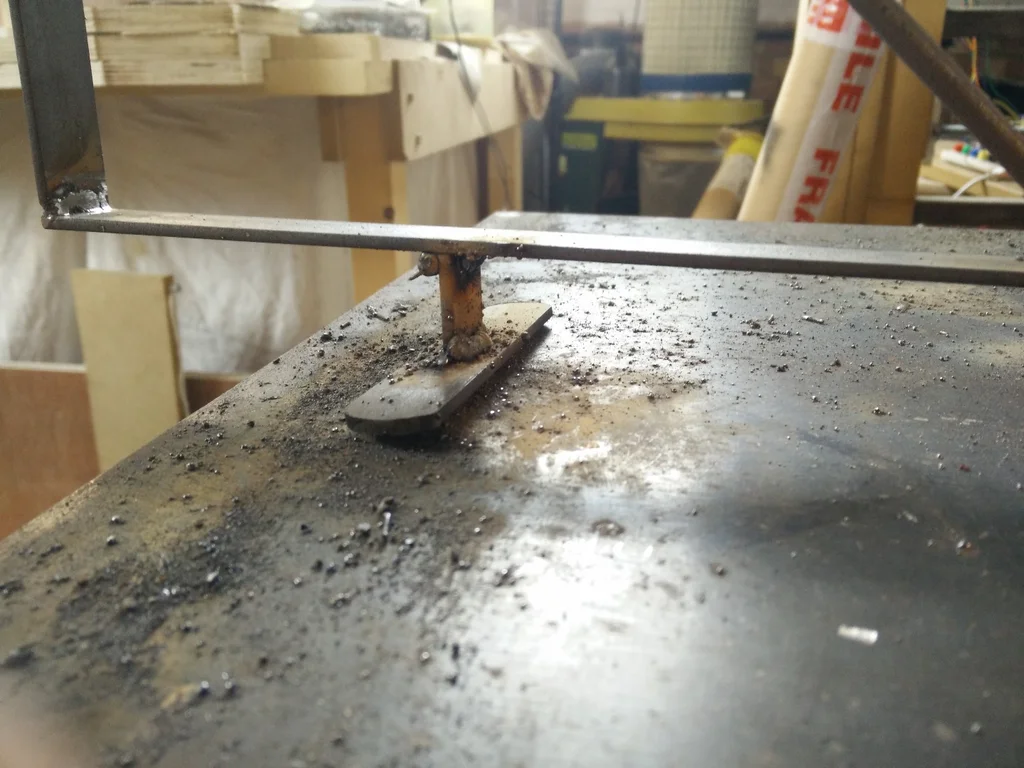
To allow each panel to stand nicely you’ll want to put them on feet. You can make a basic foot from more of the flat stock, as pictured.
Once you’ve got them attached nicely you can again use an angle grinder to clean up the look of the welds.
I placed my feet 10cm in from each corner
Step 8: Make Hinges/connectors Part 1
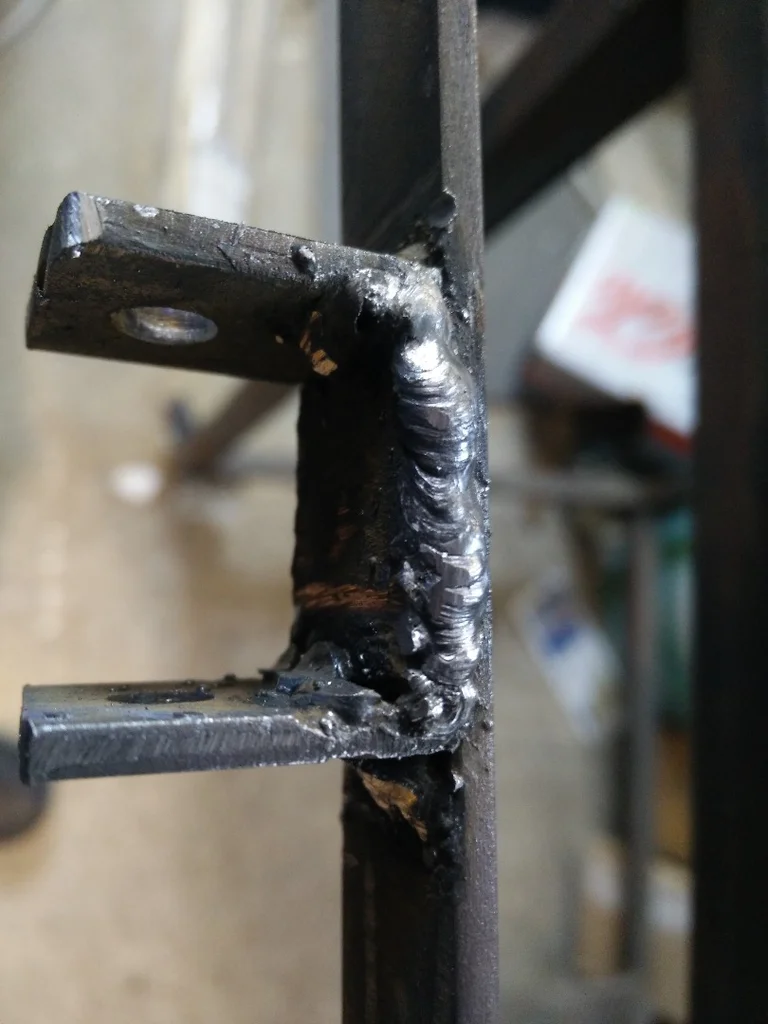
The idea is for the 3 panels to join together to form a box around the log burner. So they need some way to be joined, but ideally not permanently. You still want to be able to take the panels apart.
This is a simple ‘hinge design’
Cut 3 short lengths of the flat bar stock. Take 2 pieces and clamp them together and drill a 6.5mm hole through them on a drill press – remember to use a slow speed and some cutting lubricant for drilling through steel.
You can them weld these into a U arrangement. Which can then be welded to the side of the front frame. You require 4 of these, one for the top and bottom of each side of the front panel.
Measure from the centre of your drill holes to the rear edge of that piece, this is the minimum that your pins need to protrude from the other frames in order to fit down the barrel holes you’ve made.
Step 9: Make Hinges/connectors Part 2
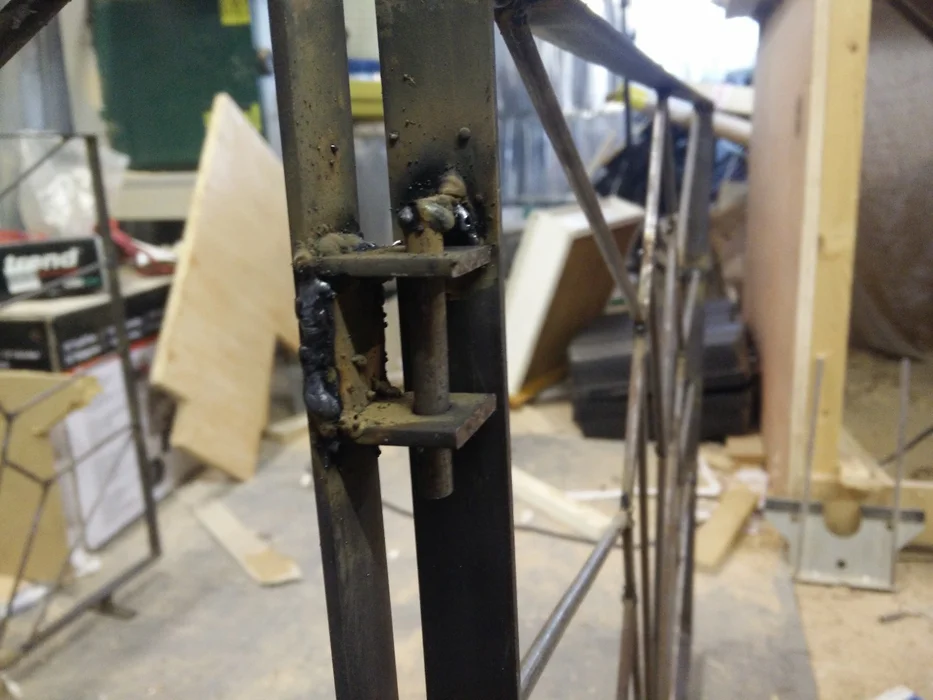
You now need to make some ‘pins’ that will slide into the drilled holes of your hinge barrels.
Cut a short length of 6mm rod at a 45 degree angle. Then weld back together twisted to form a 90 bend.
Use the measurement from the previous step to determine how far out from the frame your pins need to protrude before the 90 degree bend.
Align the front frame with the side you are working on and place your pin into the hole of the barrel piece in order to figure out the right place on your frame to weld it. This ensures correct alignment since you’re welding it in situ.
You can then slide the panels apart by lifting the pins out of the holes.
Repeat the process for the other side and you should now have 3 panels which can be connected to form a barrier around your log burner.
Step 10: Check the Fit
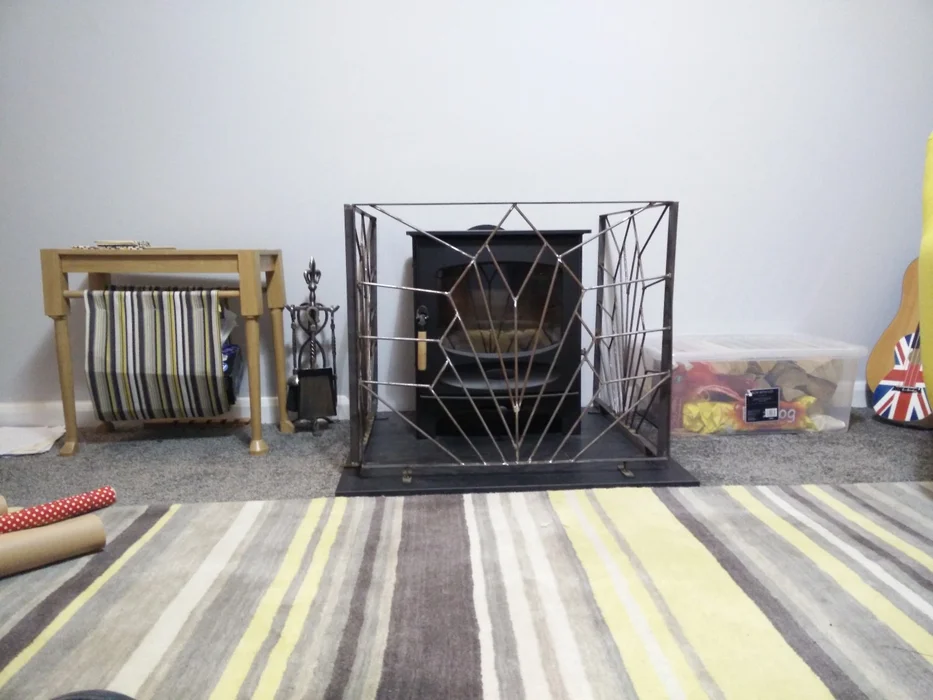
Before painting, quickly check that everything fits right around your log burner and can be assembled in place.
Step 11: Use Metal Paint to Finish
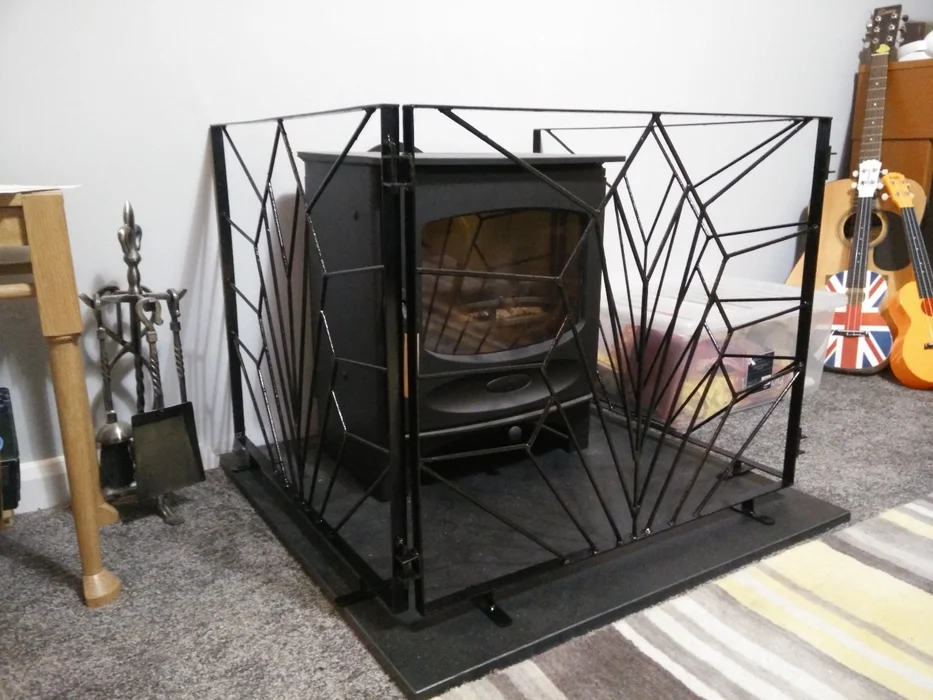
In my example I’ve painted the panels with black metal paint. It took 3 coats to get good coverage.Add TipAsk QuestionCommentDownload
Step 12: Finished!
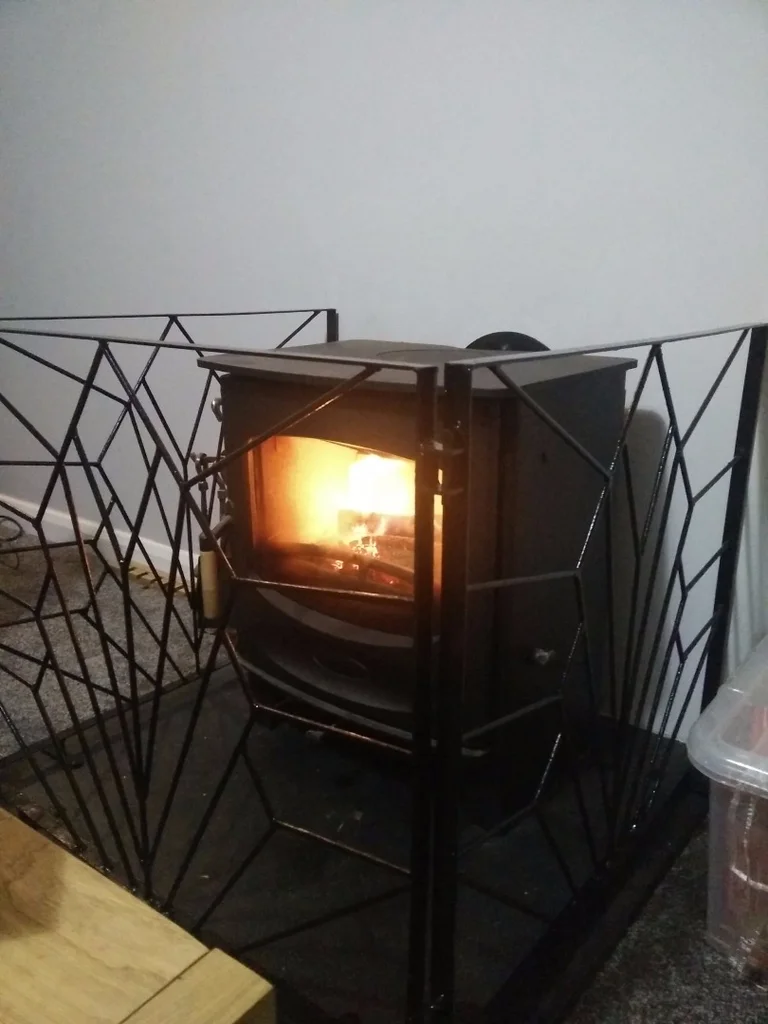
Sit back and enjoy a fire with the family.







